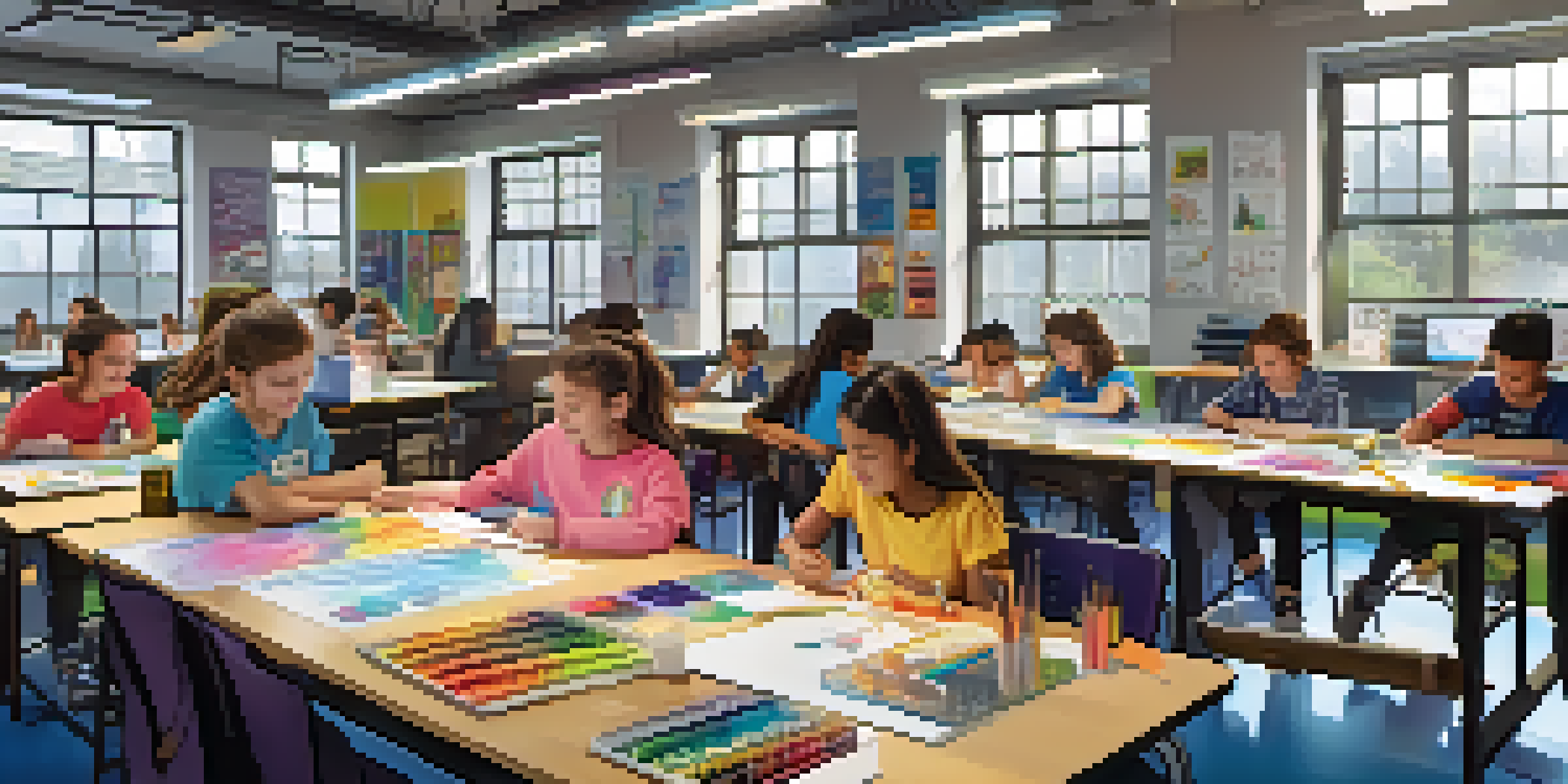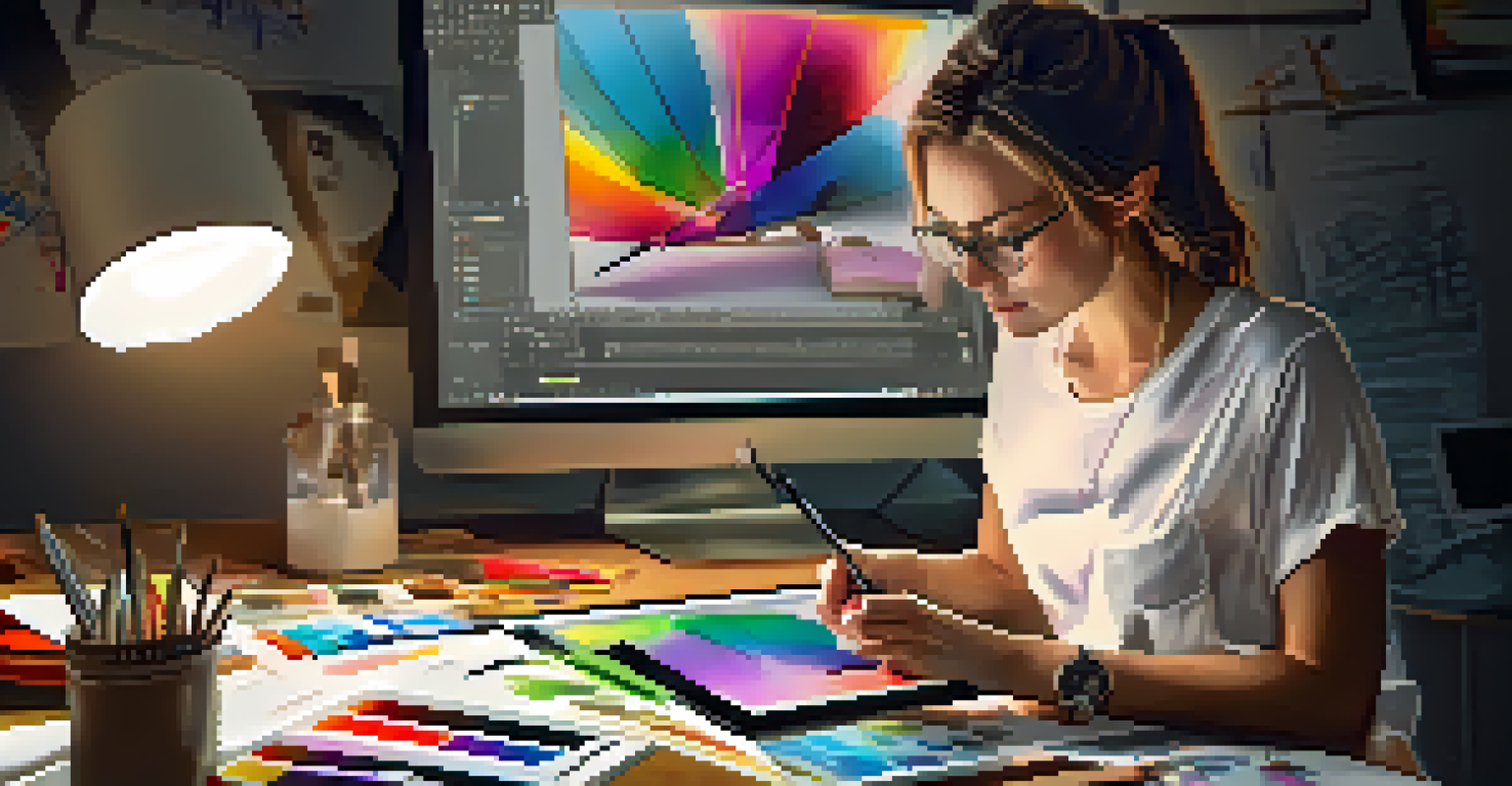The Intersection of Art and Technology in STEAM Programs

Understanding STEAM: Beyond STEM with Art
STEAM stands for Science, Technology, Engineering, Arts, and Mathematics, merging creativity with technical skills. This holistic approach emphasizes the importance of arts in fostering innovation and critical thinking. By incorporating art into STEM, students can develop a well-rounded skill set, preparing them for diverse careers.
Creativity is thinking up new things. Innovation is doing new things.
In traditional STEM education, the focus is often heavily on technical subjects, which can overlook the role of creativity. However, when art is introduced, it encourages students to think outside the box and approach problems with a unique perspective. This integration not only enhances problem-solving skills but also makes learning more engaging.
For instance, a project that combines coding with digital art allows students to visualize their programming concepts creatively. This fusion can spark interest in subjects that might otherwise seem daunting, making learning a more enjoyable experience.
The Role of Technology in Artistic Expression
Technology has transformed the way artists create and share their work, expanding the definition of what art can be. Digital tools such as graphic design software, 3D modeling, and virtual reality open new avenues for artistic expression. These technologies empower students to experiment and innovate without the constraints of traditional mediums.

For example, using software like Adobe Creative Suite, students can create intricate designs that were once only possible through manual techniques. This accessibility encourages more students to explore their artistic side, regardless of their background. Furthermore, technology facilitates collaboration among students, allowing them to co-create projects with peers across the globe.
Integrating Art Enhances Learning
Incorporating art into STEM fosters creativity and critical thinking, leading to a more engaging educational experience.
Additionally, the rise of social media platforms provides artists with a space to showcase their work, gaining feedback and recognition in real time. This interconnectedness fosters a vibrant community where students can learn from one another and be inspired by diverse artistic styles.
Enhancing Problem Solving Through Creative Thinking
One of the most significant benefits of integrating art into STEAM is the enhancement of problem-solving skills. Artistic endeavors encourage students to experiment, take risks, and learn from failure, which are key components of effective problem-solving. This mindset is invaluable in both artistic and scientific endeavors.
Art is not freedom from discipline, but disciplined freedom.
For instance, when students engage in design thinking—a process that involves brainstorming, prototyping, and testing—they learn to approach challenges with a creative lens. This skill translates into real-world scenarios, where innovative solutions are often required. By nurturing creativity through art, students become more adaptable and resourceful.
Moreover, projects that require both technical and artistic input can lead to more holistic solutions. For example, designing a sustainable product requires not only engineering knowledge but also an aesthetic vision that appeals to consumers. This dual focus prepares students for the complexities of modern problem-solving.
Real-World Applications of Art and Technology
In today’s job market, the demand for skills that blend art and technology is on the rise. Fields like graphic design, game development, and digital media production exemplify the intersection of these disciplines. By participating in STEAM programs, students gain experience that aligns with industry needs, making them more competitive candidates.
Consider the gaming industry, where artists and programmers collaborate to create immersive experiences. This requires a deep understanding of both artistic concepts and technical execution, showcasing the necessity of a STEAM education. As students work on projects that mimic real-world applications, they build portfolios that demonstrate their capabilities.
Collaboration Boosts Creativity
Teamwork in STEAM projects enhances creativity and interpersonal skills, preparing students for future collaborative environments.
Moreover, industries such as architecture and advertising rely heavily on the synergy of art and technology. By fostering a curriculum that encourages this blend, educators are preparing students for various career paths that value innovative thinking and creativity.
The Impact of Collaborative Learning in STEAM
Collaboration is at the heart of successful STEAM programs, where students work together to tackle projects that merge art and technology. This teamwork not only enhances their creativity but also teaches them essential interpersonal skills. Learning to communicate effectively with peers from different backgrounds prepares students for future collaborative environments.
For example, a group project that involves creating a digital art installation can bring together students with various talents—some may excel in coding while others have a knack for design. This diversity leads to richer ideas and solutions, as each student contributes their unique perspective. It also fosters a sense of community, encouraging students to support one another.
Additionally, collaboration with professionals in the field can further enhance learning experiences. Guest speakers, workshops, and mentorship programs can provide students with insights and guidance, bridging the gap between education and the workforce.
The Importance of Creative Confidence in Students
Creative confidence is the belief in one's ability to create and innovate, and it plays a vital role in STEAM education. When students engage in artistic endeavors, they learn to trust their instincts and embrace their creativity. This newfound confidence not only benefits their artistic pursuits but also spills over into other areas of study.
For instance, a student who feels confident in their art skills may be more willing to take risks in their science projects, leading to innovative experiments. This cycle of creativity and confidence can empower students to tackle challenges in any field. By encouraging self-expression through art, educators can cultivate a generation of confident problem solvers.
Creative Confidence Drives Innovation
Fostering creative confidence in students encourages them to take risks and embrace innovation across various subjects.
Moreover, fostering creative confidence can help combat the fear of failure that often stifles student innovation. When students learn that mistakes are part of the creative process, they become more resilient and open to exploring new ideas. This mindset is essential in a rapidly changing world where adaptability is key.
Future Trends: The Evolution of Art in STEAM Education
As technology continues to evolve, so too will the ways in which art is integrated into STEAM education. Emerging technologies like artificial intelligence, augmented reality, and interactive media are set to redefine creative possibilities. Schools and educators must stay ahead of these trends to prepare students for the future job market.
For example, virtual reality can create immersive art experiences, allowing students to explore and interact with art in ways that were previously unimaginable. This not only enhances engagement but also deepens understanding of artistic concepts. As these technologies become more accessible, they will likely play a significant role in shaping the curriculum.

Ultimately, the goal of integrating art and technology in STEAM education is to equip students with the skills they need to thrive in an increasingly interdisciplinary world. By embracing these trends and fostering a culture of creativity, educators can prepare students to innovate and excel in whatever paths they choose.